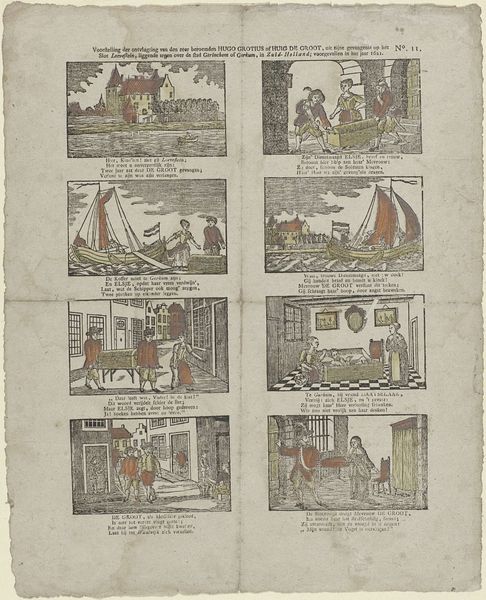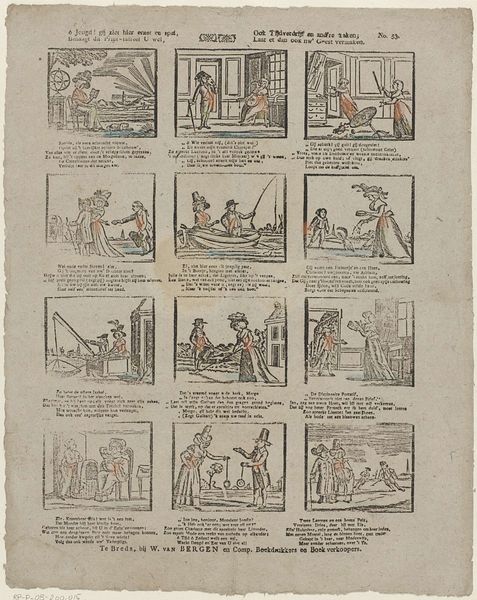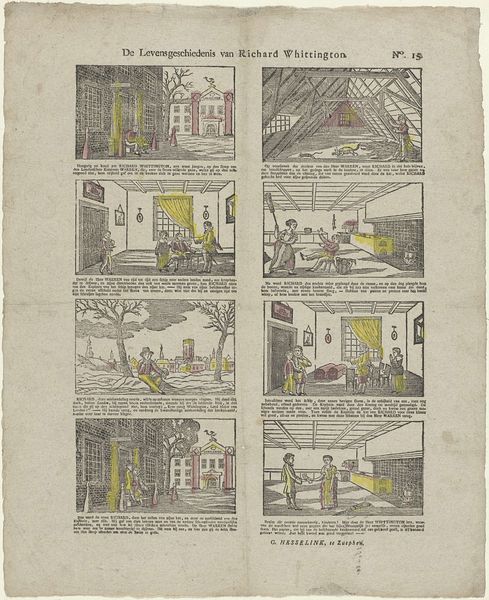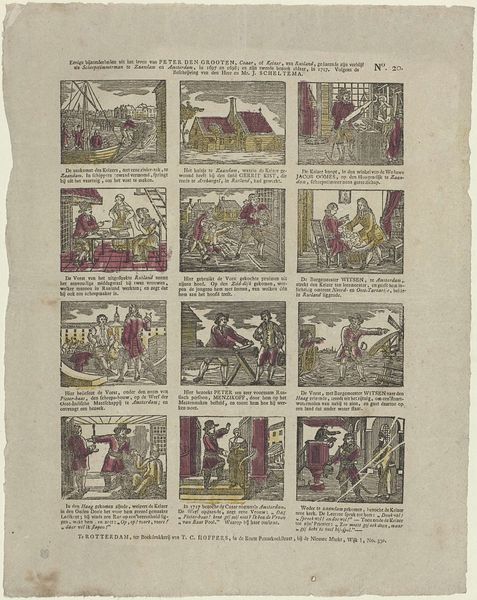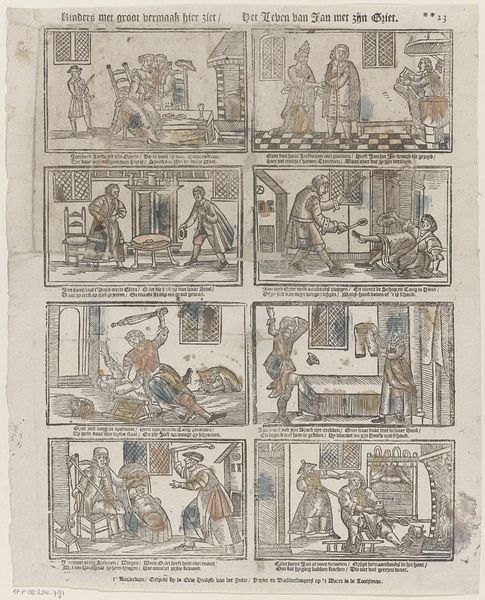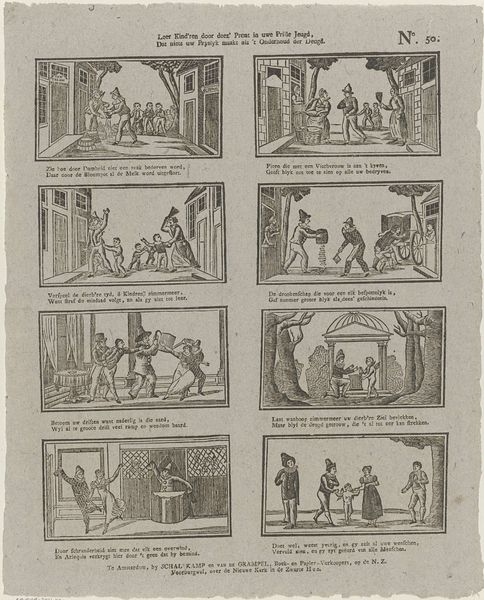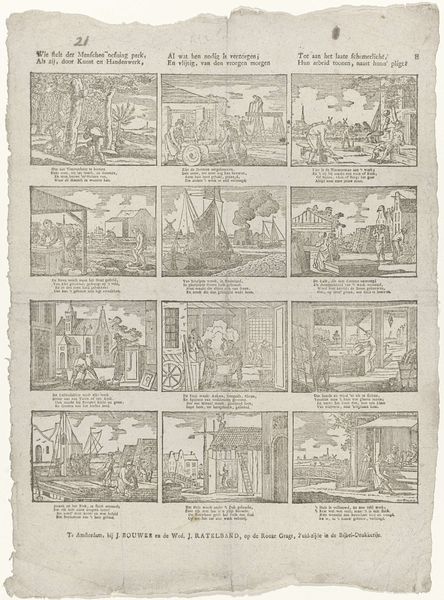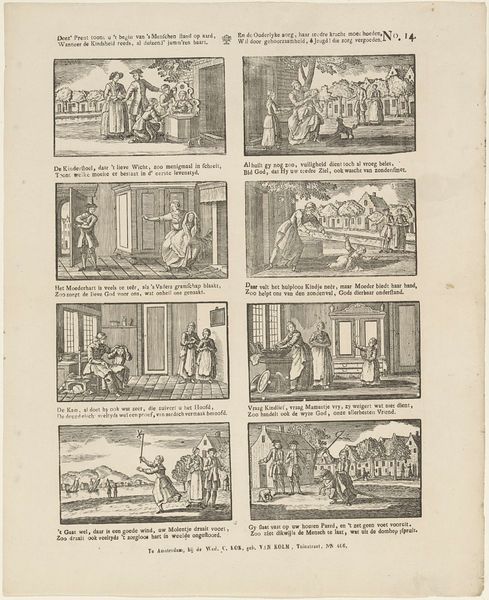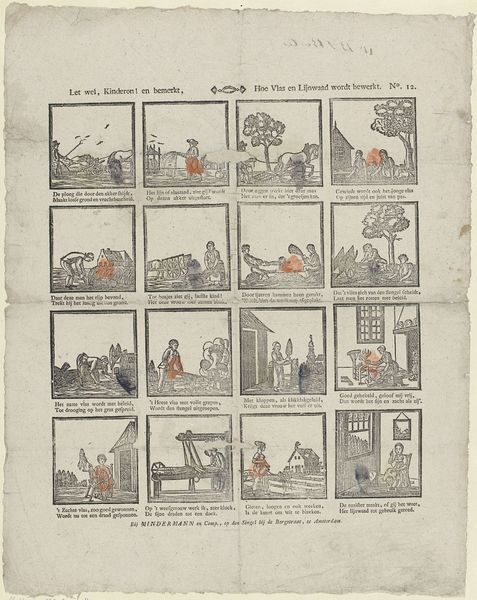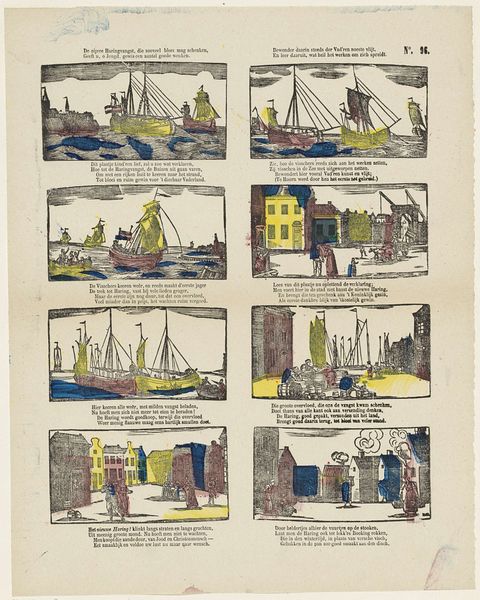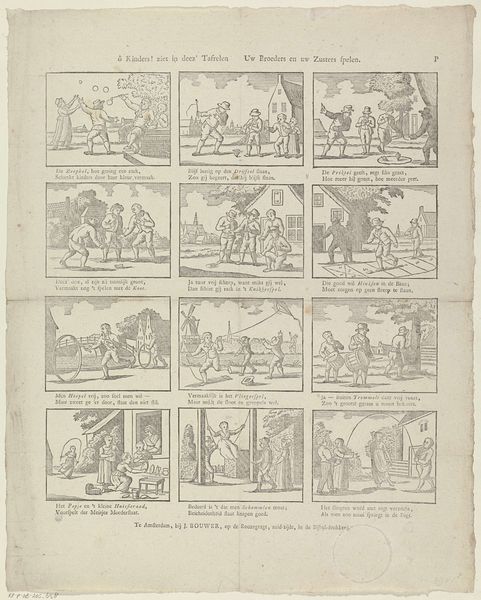
Voorstelling der ontvlugting van den zeer beroemden Hugo Grotius of Hugo de Groot (...) 1820 - 1838
0:00
0:00
Dimensions: height 378 mm, width 322 mm
Copyright: Rijks Museum: Open Domain
Curator: Here we have a print from the early 19th century, sometime between 1820 and 1838. The printmaker was Christiaan Jacob Schuyling, and it’s an engraving titled "Voorstelling der ontvlugting van den zeer beroemden Hugo Grotius of Hugo de Groot (...)," depicting the escape of Hugo Grotius. Editor: It feels like a comic strip, almost. Very orderly with the small panels. My initial sense is that it carries a message of hope, even triumph, despite the constraints apparent in each little scene. Curator: Precisely. It’s a historical narrative depicted as popular folk art. If we look closely, the sequencing tells a specific story about power, justice, and liberation in the face of tyranny, filtered through the lens of Dutch identity. Each panel functions like a symbolic stage. Editor: I notice that the artist gives particular care to certain recurring motifs. Boats are prominent, suggesting movement and freedom, but so are enclosed spaces, rooms, and corridors, which highlight restriction and oppression. Even the chest plays an important role! Curator: Absolutely. The chest is especially important, the central symbol. The tale revolves around Grotius's clever escape from Loevestein Castle where he was imprisoned. What meanings and messages are encoded in the chosen imagery of these containers, corridors, castles? The narratives of state versus the individual resonate across social strata. Editor: Indeed. There’s a certain moral weight given to certain architectural and symbolic representations across cultures that informs an image such as this one and connects it across geographies and eras. It definitely deepens the print’s significance. Curator: I think what's also crucial here is recognizing how such images become tools to shape cultural memory. We see how the themes of confinement and freedom take hold through readily reproducible images like these. Editor: And these symbolic and almost archetypal representations help distill events into core concepts. I appreciate having this brief but profound look. Curator: Agreed. The visual and narrative simplicity really enables the story to endure and become part of the collective Dutch historical identity.
Comments
No comments
Be the first to comment and join the conversation on the ultimate creative platform.
